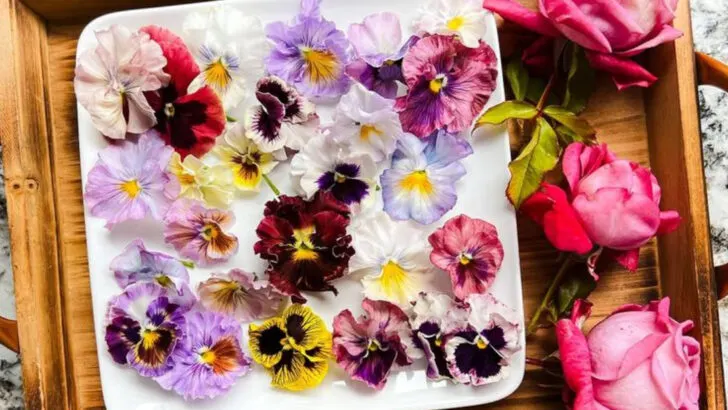If you think flowers are just for looking pretty in a vase, think again. Many blooms are not only safe to eat, but they also bring vibrant colors, surprising flavors, and a touch of elegance to everyday meals. Whether sprinkled over a salad, frozen into ice cubes, or candied for desserts, edible flowers instantly turn ordinary dishes into something worth photographing (and devouring).
From peppery nasturtiums to floral-sweet violets, these blooms don’t just sit pretty—they enhance flavor profiles and elevate presentation without needing complicated prep. And the best part? Most of these flowers are easy to grow at home, whether in a backyard, balcony pot, or sunny windowsill.
In this list, you’ll discover 20 edible flowers that are as delicious as they are beautiful. Whether you’re an experienced cook or just like to impress guests with eye-catching meals, these blossoms will help you create plates that taste amazing and look like art.
Nasturtiums
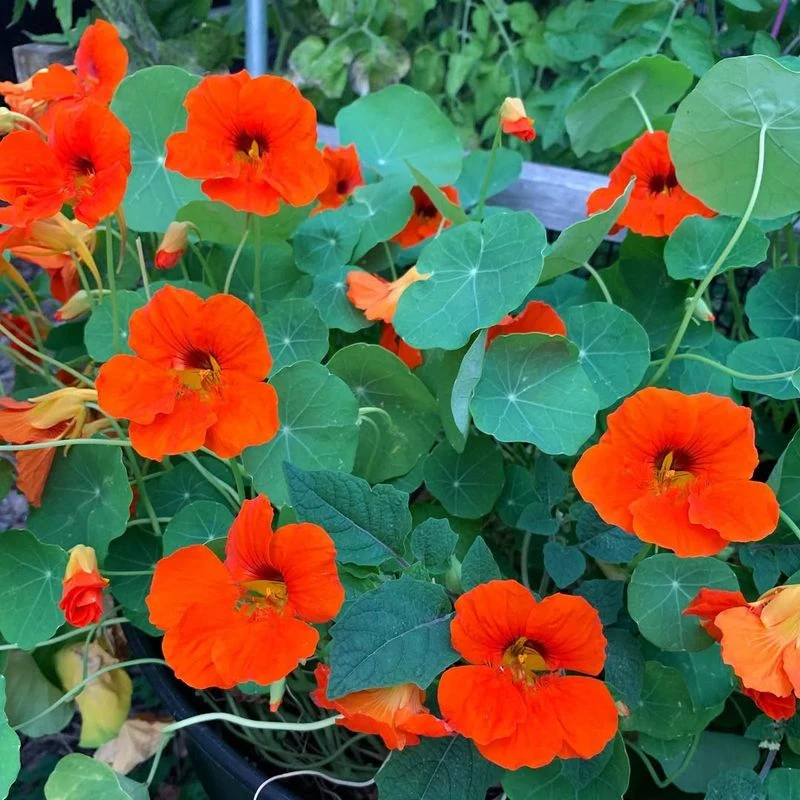
These vibrant blooms are a feast for the eyes and the palate. With their peppery flavor, nasturtiums add a zesty kick to salads and sandwiches. Available in a range of colors, from sunny yellows to fiery oranges, they can brighten up any dish. Their round leaves are also edible and equally flavorful. While they’re often seen as decorative plants, their culinary potential shouldn’t be overlooked. Nasturtiums are easy to grow, making them a favorite among home gardeners looking to add some spice to their meals. Why not toss a few into your next salad?
Borage
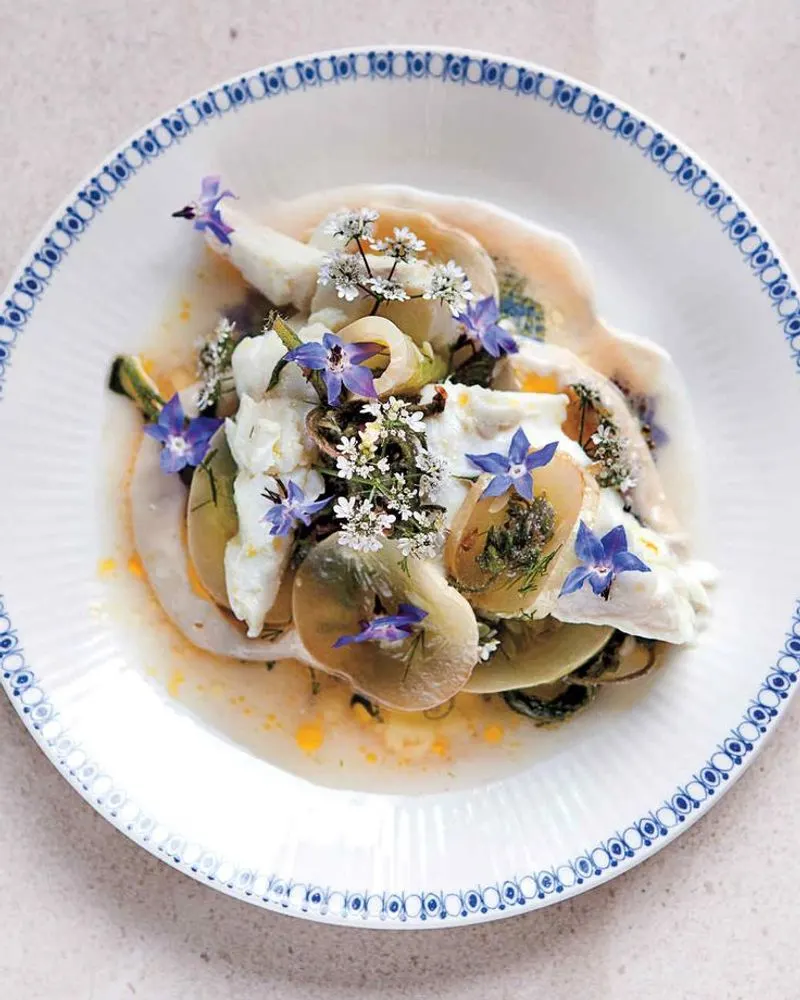
The star-shaped blue flowers of borage are not only eye-catching but also offer a refreshing hint of cucumber flavor. Often used to garnish summer drinks, these flowers can bring a cool twist to your beverages. Besides their culinary uses, borage has a history of medicinal applications. Known for its mood-lifting properties, it’s a bloom that’s as beneficial as it is beautiful. Adding borage to your salads or cold soups can provide both visual and taste appeal. A true garden gem, borage is as versatile as it is striking.
Violas
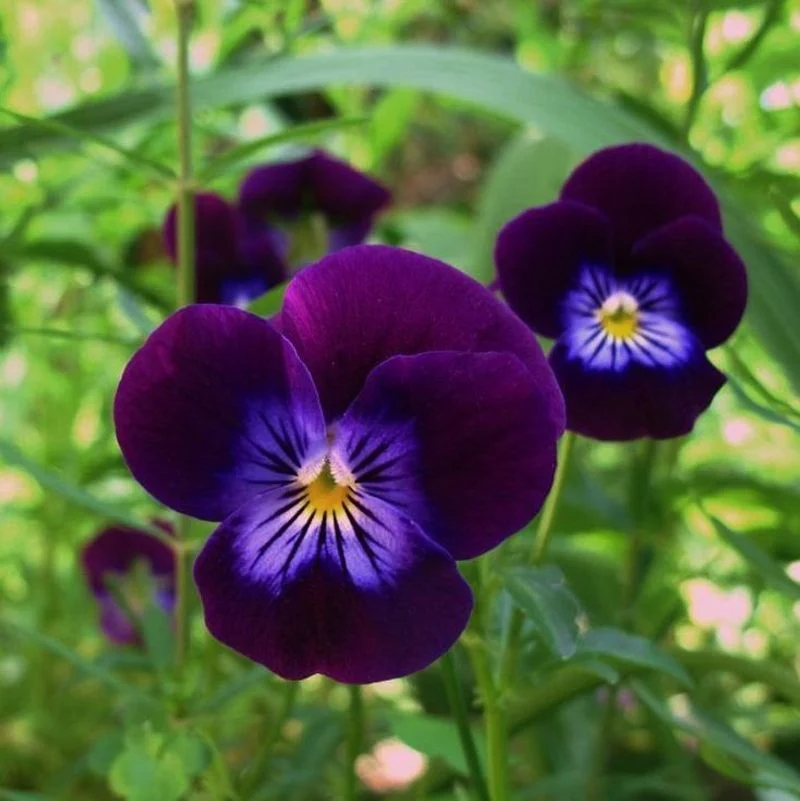
Violas, with their charming faces and striking colors, have a mild, sweet flavor that pairs well with both sweet and savory dishes. Their petite size and vivid hues make them ideal for decorating cakes and pastries. These flowers are more than just pretty faces; they can also be crystallized for unique confectionary treats. In the garden, violas are hardy and can thrive in cooler temperatures, providing a splash of color even in the early spring. Incorporating violas into your culinary creations can add a touch of elegance and nostalgia.
Pansies
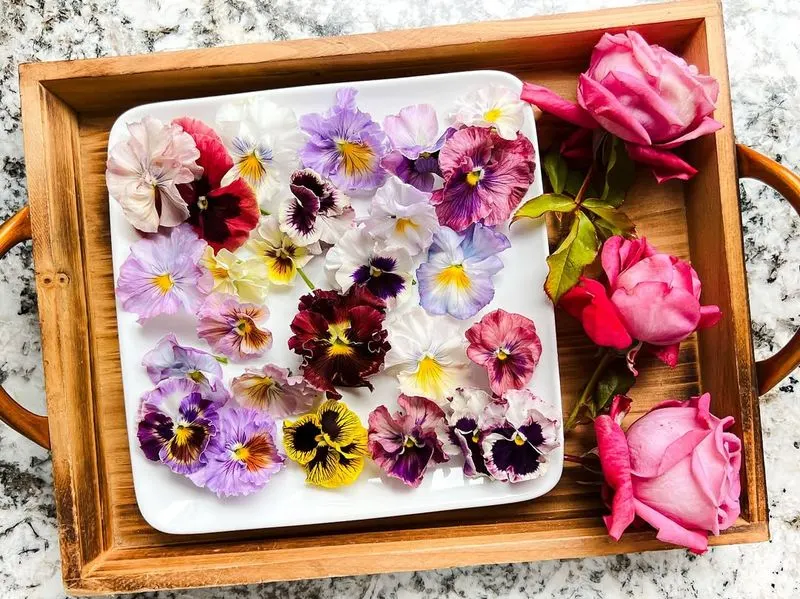
Pansies, beloved for their vibrant color patterns, offer a gentle, grassy flavor that complements a variety of dishes. Often used to adorn salads and desserts, these flowers also make stunning cake embellishments. Their delicate nature means they should be used fresh, right after picking. Besides their culinary uses, pansies are easy to grow and maintain, making them a popular choice for gardeners. Available in almost every color imaginable, they can be a flexible component in your culinary toolkit. Adding pansies to your dishes is sure to impress guests.
Calendula
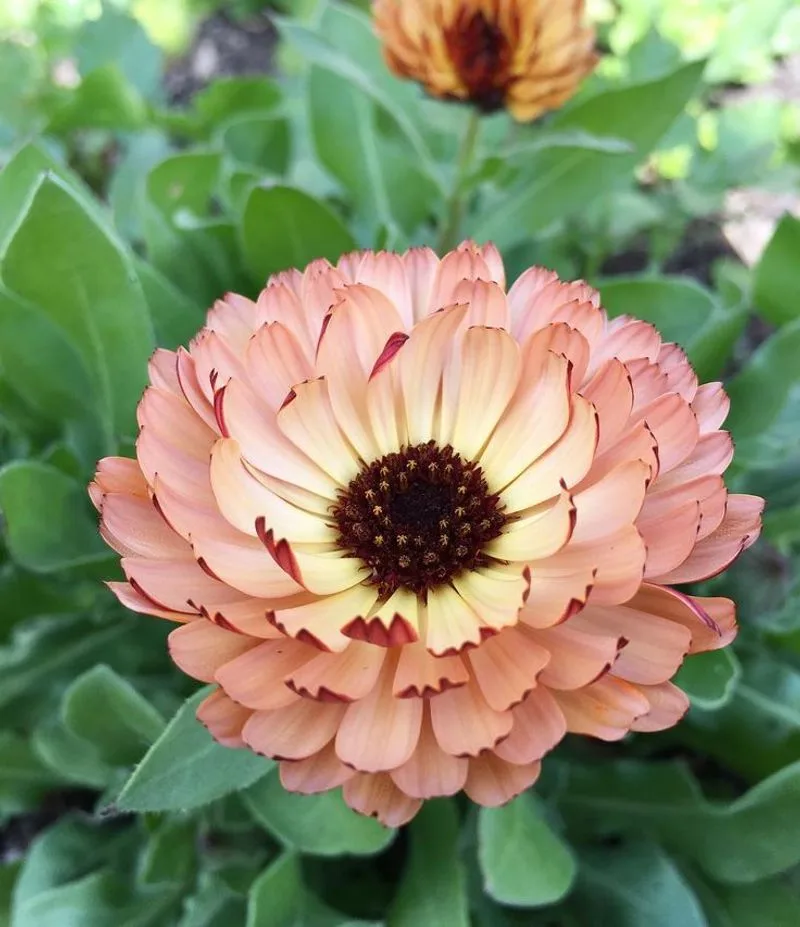
Known as the “poor man’s saffron,” calendula’s sunny disposition adds a beautiful golden hue to dishes. This cheerful flower has a slightly bitter, peppery taste that’s perfect for flavoring soups and stews. Its petals can be used fresh or dried, offering versatility in the kitchen. Calendula is also valued for its healing properties, often used in skin care products. Whether you’re seasoning a dish or decorating a plate, this multi-purpose flower can add both color and health benefits. It’s a staple for those who enjoy cooking with flowers.
Chive Blossoms
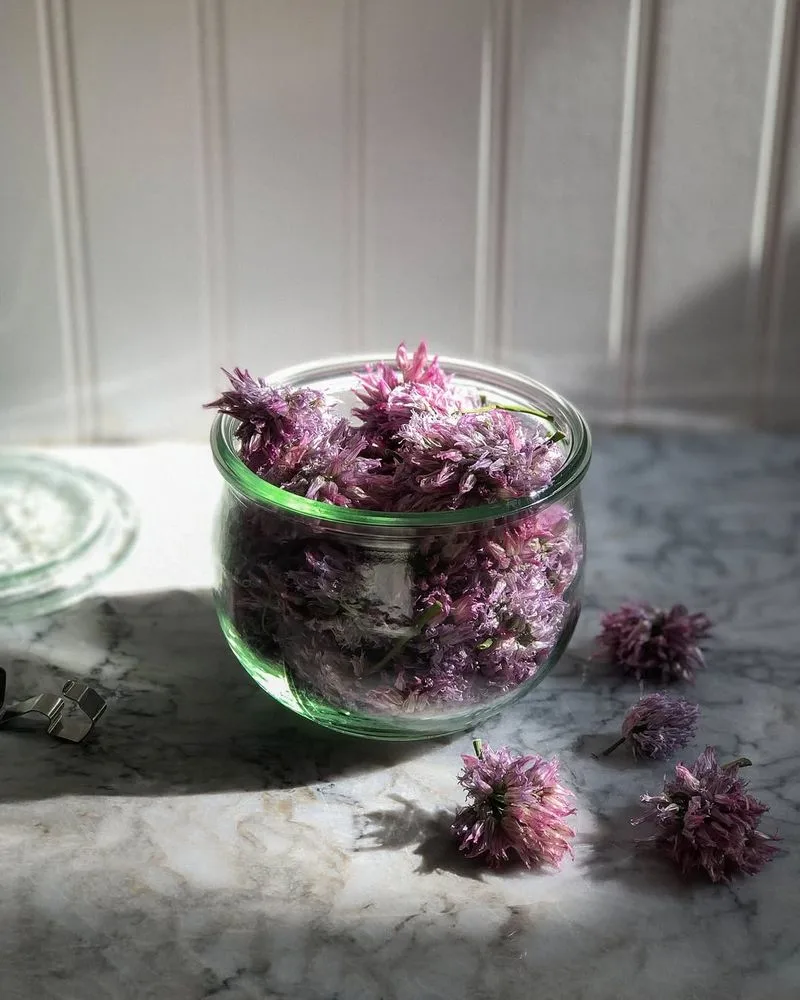
These purple pom-poms pack a punch, offering a mild onion flavor that can enhance salads and soups. Chive blossoms are not only tasty but also visually appealing, making them a dual-purpose addition to your kitchen. Their delicate flavor pairs well with egg dishes and cheeses. When sprinkled over a dish, they add a subtle yet distinct onion flavor without being overpowering. Easy to grow and harvest, chive blossoms are a favorite among those who enjoy creating aesthetically pleasing meals. They can also be infused into vinegars for a gourmet touch.
Hibiscus
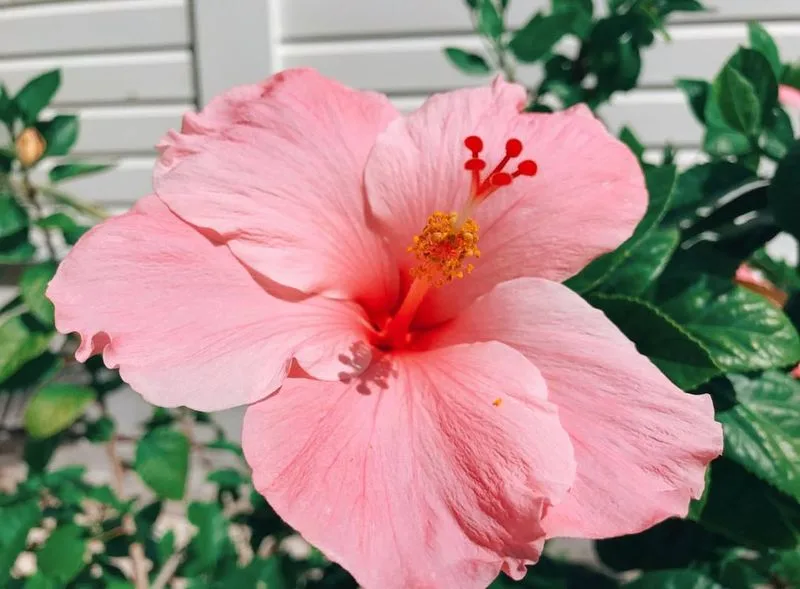
Hibiscus is known for its tart flavor, reminiscent of cranberries, making it a favorite for teas and cocktails. The large, showy flowers are as tasty as they are beautiful, offering a unique taste experience. Beyond beverages, hibiscus can be used in jams and desserts, adding a punch of color and flavor. These flowers are also celebrated for their health benefits, particularly in lowering blood pressure. A tropical delight, hibiscus brings both beauty and utility to the table. Whether dried or fresh, it’s a versatile addition to any kitchen.
Lavender
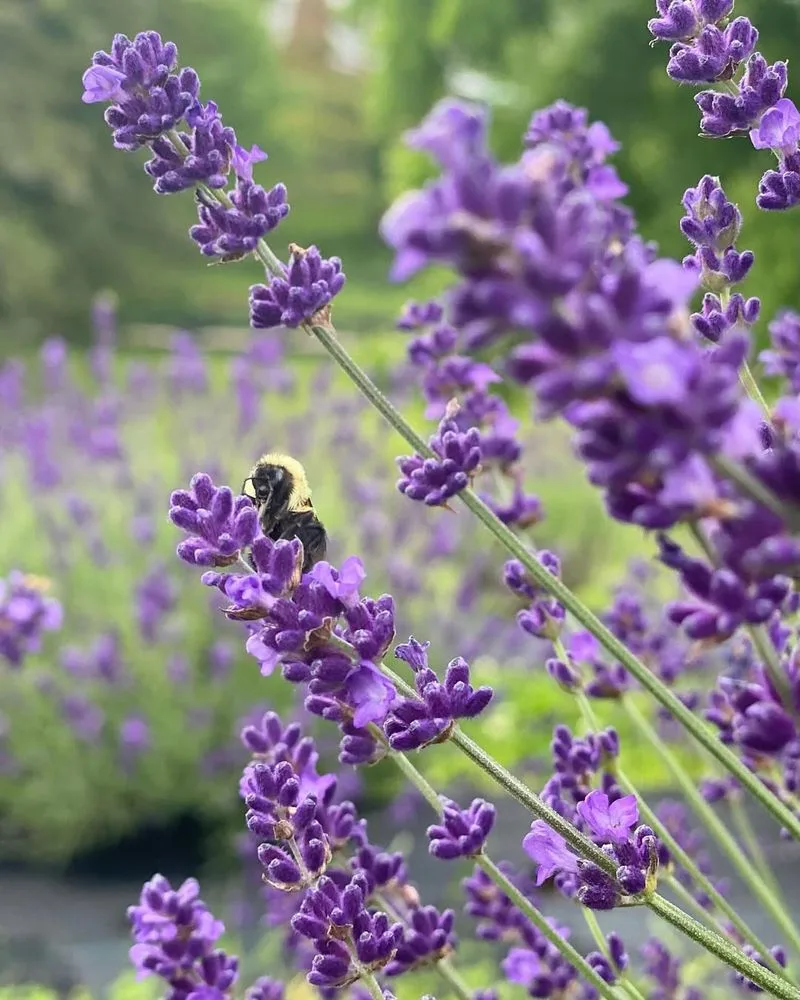
Lavender is more than just a fragrant flower; its culinary uses are vast and varied. With a flavor profile that includes floral notes and a hint of lemon, lavender can enhance both sweet and savory dishes. From cookies to roasted meats, its distinctive taste is unmistakable. Often paired with honey and lemon, lavender can transform ordinary treats into gourmet delights. It’s also known for its calming properties, making it a perfect addition to teas. Lavender is a favorite among chefs looking to add a sophisticated edge to their creations.
Squash Blossoms
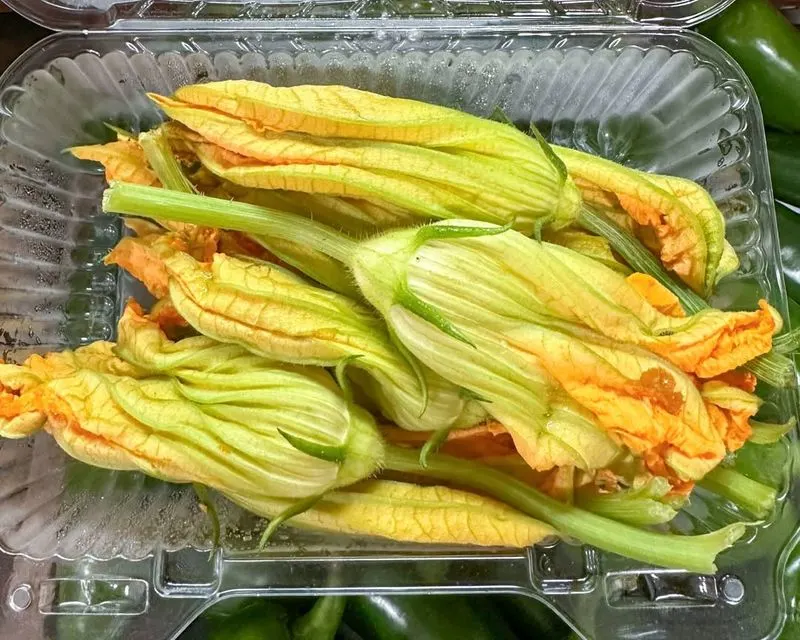
These large, delicate flowers are a staple in Italian cuisine, often stuffed with cheese and fried to perfection. Squash blossoms have a mild, slightly sweet flavor that pairs well with a variety of fillings. Their tender texture makes them a gourmet’s dream, perfect for adding elegance to any dish. Beyond frying, they can be used in salads and as pizza toppings. Growing your own squash blossoms can ensure a fresh supply throughout the summer. Their versatility and flavor make them a sought-after ingredient in many kitchens worldwide.
Rose
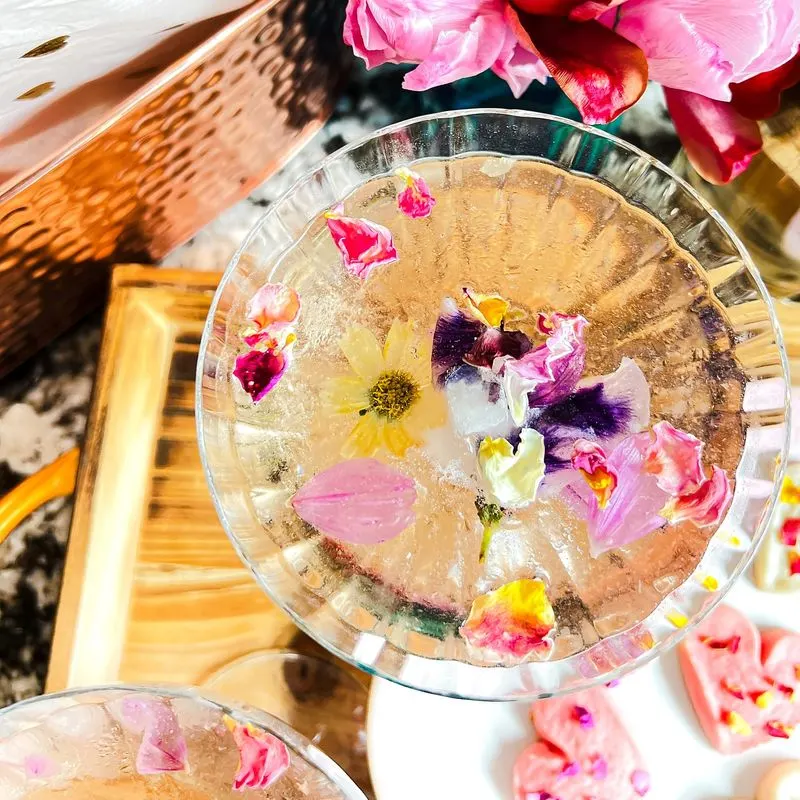
The classic rose is as much a treat for the taste buds as it is for the eyes. With a flavor that varies from sweet to spicy depending on the variety, roses are a versatile culinary ingredient. Their petals can be used fresh in salads or dried for tea blends and desserts. Rosewater, a byproduct of rose distillation, is a popular ingredient in Middle Eastern and Indian cuisines. Beyond their flavor, roses are renowned for their symbolic beauty. Including roses in your dishes can add a touch of romance and sophistication.
Marigold
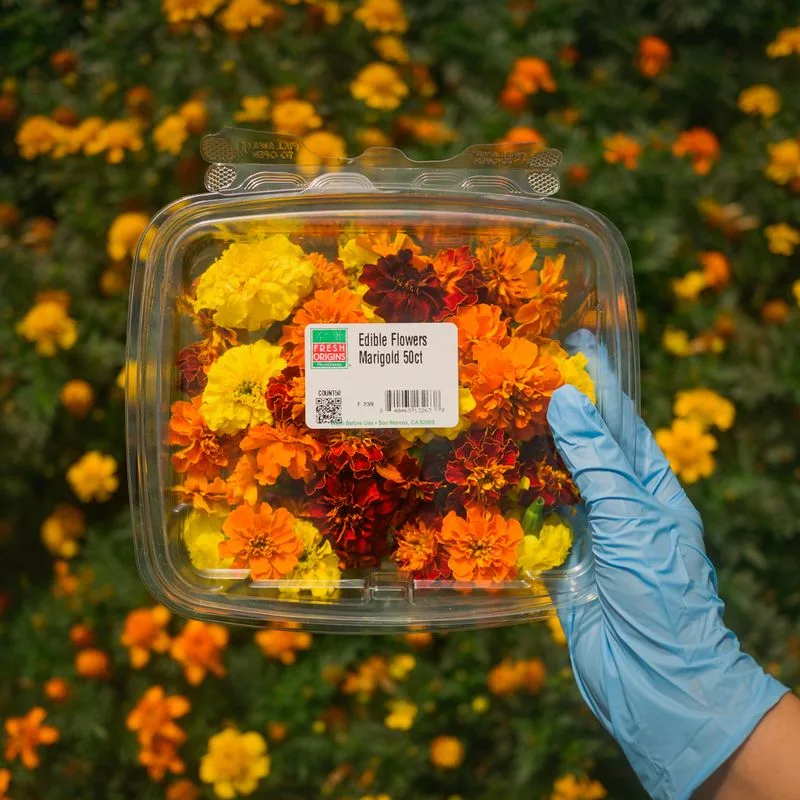
Marigold flowers offer more than just visual appeal; their citrusy taste can brighten up a range of dishes. Often referred to as “poor man’s saffron,” marigolds can impart a golden hue and a tart flavor to dishes like rice and salads. They’re also popular in herbal medicine and gardening for their pest-repelling properties. Easy to grow and harvest, marigolds are a great addition for those looking to elevate their culinary efforts. Their bold color and taste make marigolds a cheerful, edible garnish for any plate.
Violets
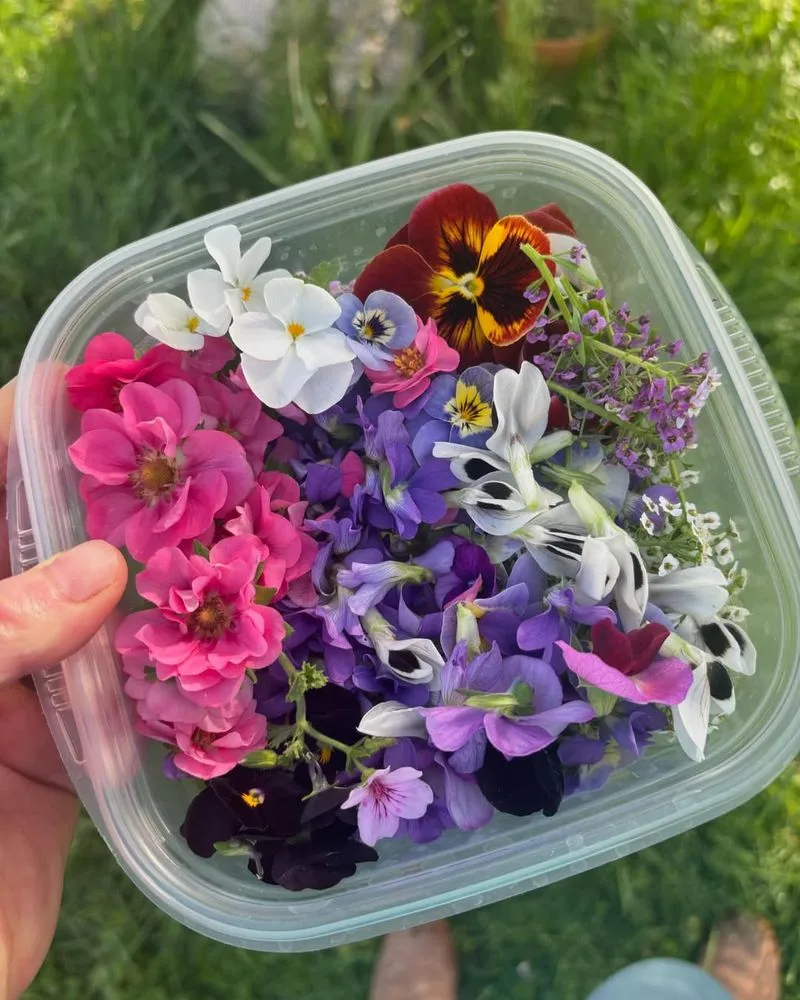
Violets carry a delicate sweetness that pairs delightfully with desserts and salads. These petite blooms are often crystallized to create stunning garnishes for cakes and pastries. Beyond their culinary uses, violets have been used in traditional medicine for their soothing properties. In the garden, they are hardy plants that can thrive in various conditions, providing a consistent splash of color. Adding violets to your culinary creations can offer both visual and delicious rewards. A timeless classic, violets are always in vogue.
Dandelions
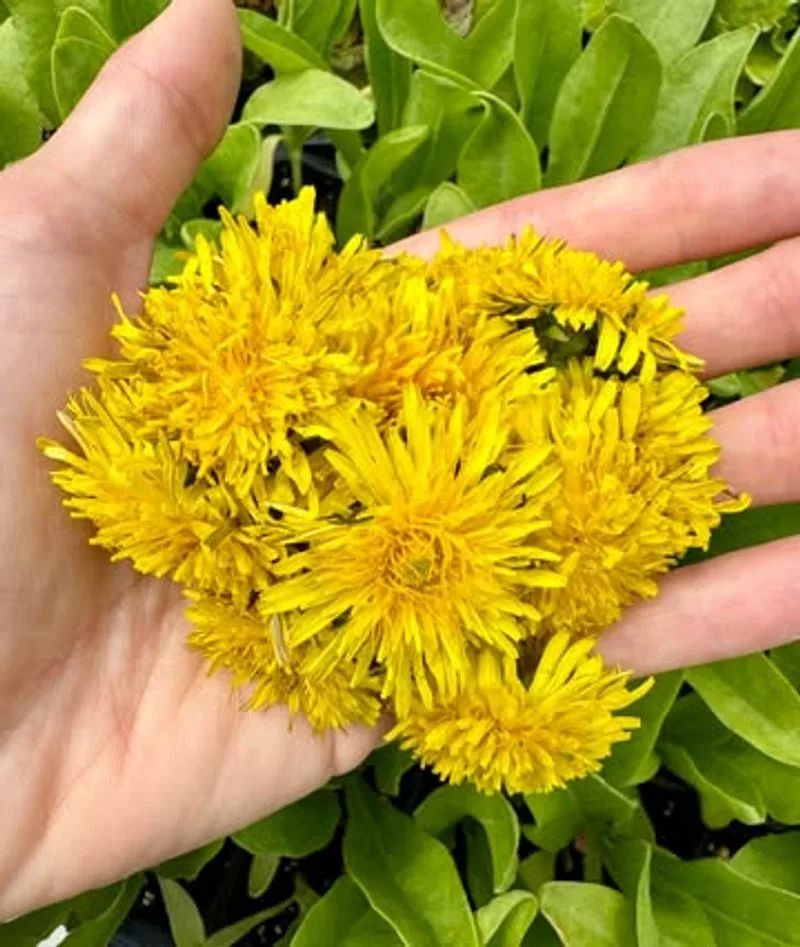
Often overlooked as mere weeds, dandelions are a powerhouse of nutrition. Their sunny yellow flowers have a honey-like sweetness, making them a unique addition to salads and teas. The entire plant is edible, offering versatility in the kitchen. Dandelion greens are slightly bitter, similar to arugula, and can be sautéed or added to salads. Known for their detoxifying properties, dandelions have been used in folk medicine for centuries. Embracing these common flowers in your cooking can bring both health benefits and a touch of whimsy.
Elderflowers
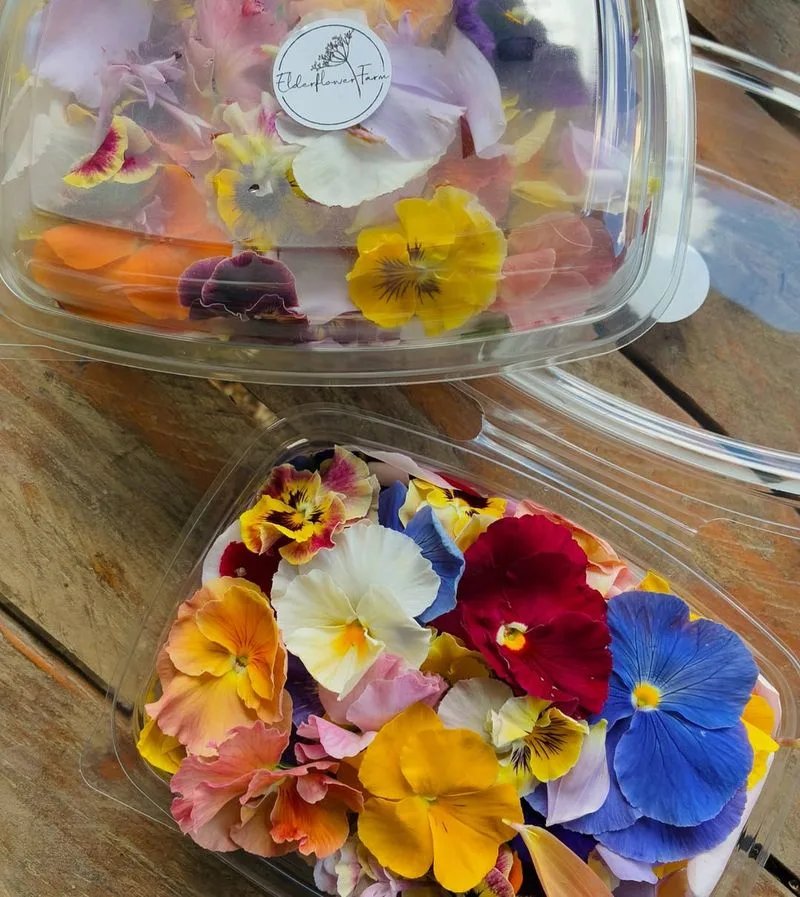
Elderflowers are celebrated for their intoxicating floral aroma and subtle flavor. Often used in cordials and liqueurs, these blossoms can add a sophisticated touch to drinks and desserts. Their delicate taste pairs well with fruits like lemon and strawberry. Beyond the kitchen, elderflowers have a long history in herbal medicine, known for their anti-inflammatory properties. Incorporating elderflowers into your culinary repertoire can provide both flavor and elegance. These blossoms are a favorite for those looking to craft artisanal beverages and confections.
Chamomile
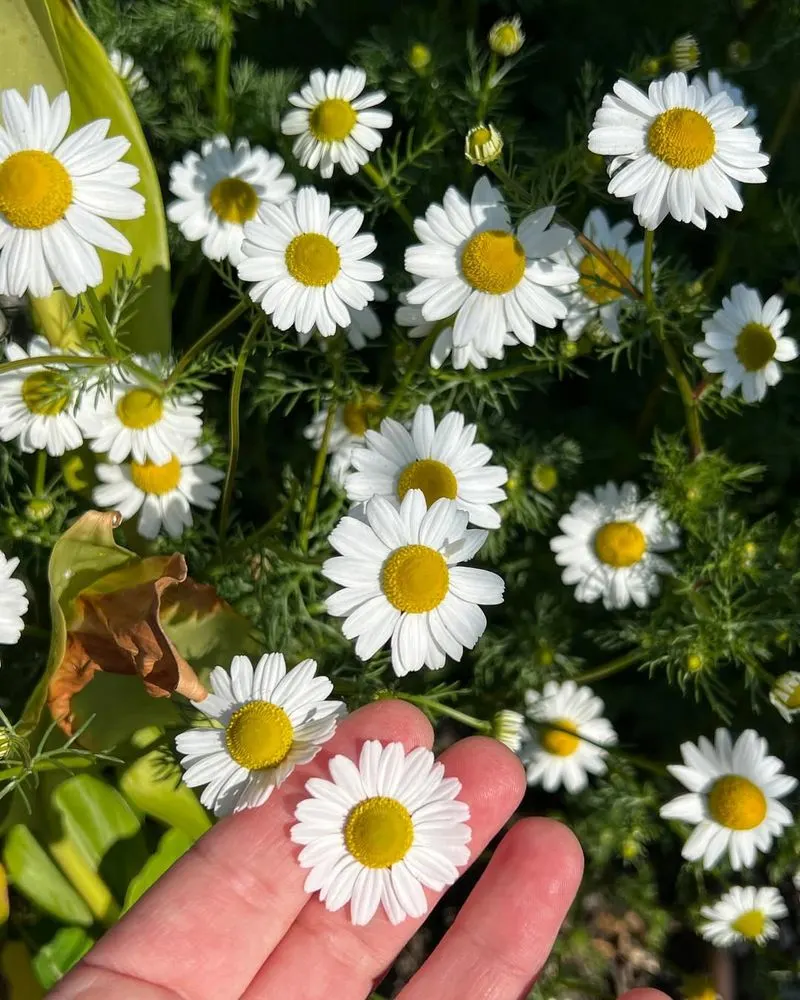
Chamomile is best known for its soothing tea, but its delicate apple-like flavor can enhance more than just beverages. These daisy-like flowers can be used to infuse creams and desserts, offering a calming touch to your culinary creations. Chamomile is also celebrated for its anti-inflammatory and calming properties, making it a staple in natural remedies. Growing chamomile at home can ensure a fresh supply for teas and cooking. Whether steeped or sprinkled, chamomile adds a gentle charm to dishes.
Citrus Blossoms
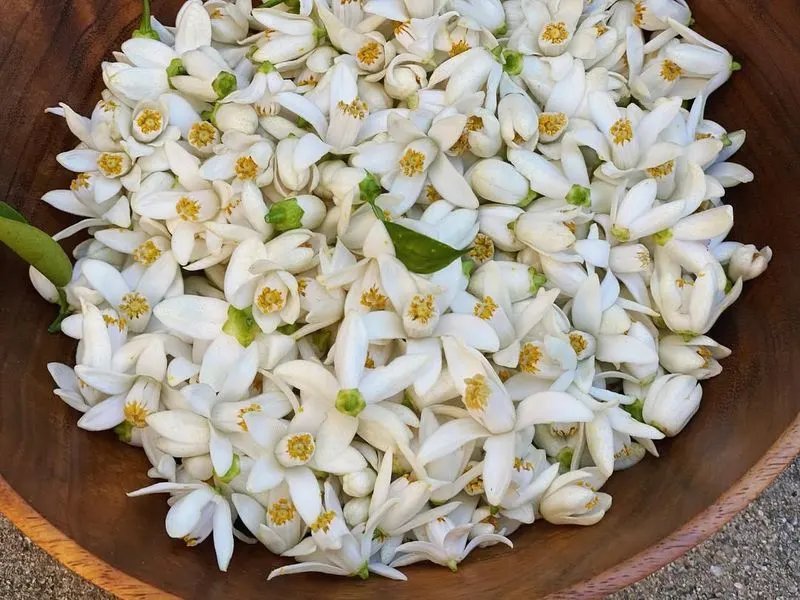
Citrus blossoms, with their intoxicating aroma, are a hidden gem in the culinary world. These fragrant flowers, from orange to lemon trees, can add a sweet floral note to dishes. Their subtle citrus flavor is perfect for infusing into syrups, desserts, and cocktails. In addition to their culinary uses, citrus blossoms are known for their mood-lifting scent. These blossoms can be a delightful addition to your kitchen, offering both aroma and flavor. For those seeking a unique taste experience, citrus blossoms are an aromatic treasure.
Fennel Flowers
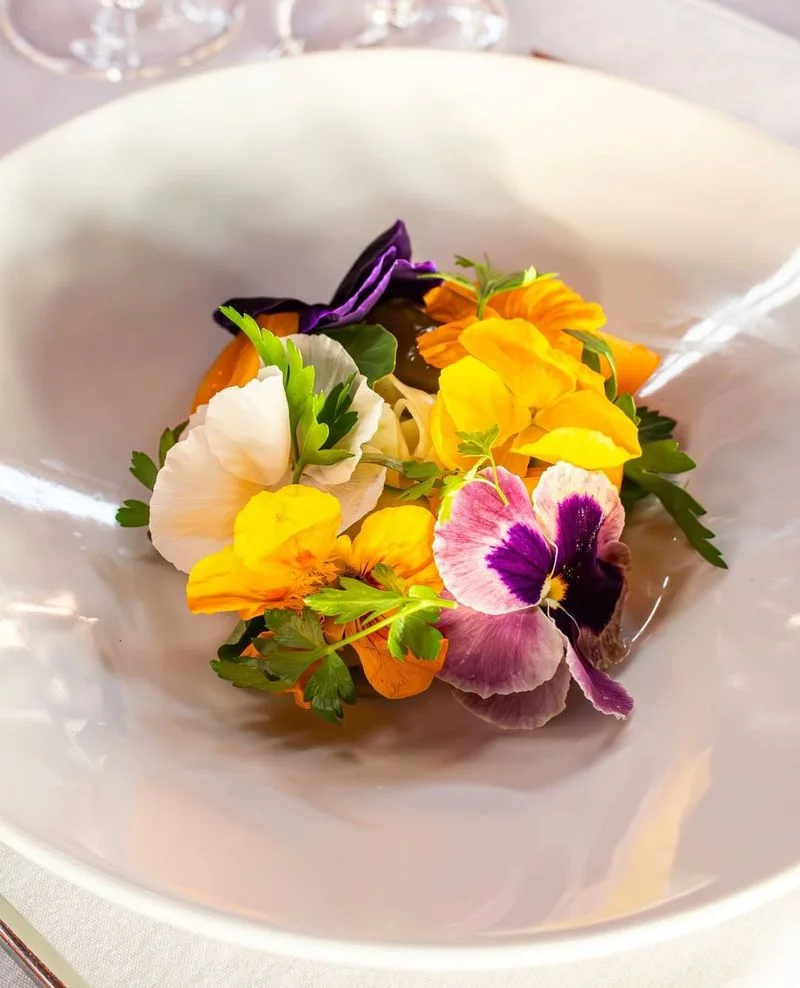
Fennel flowers, with their bright yellow umbels, bring a burst of anise flavor to dishes. These tiny blooms are often used to garnish soups and salads, adding both color and taste. The soft, licorice-like flavor of fennel flowers pairs well with fish and poultry. Besides their culinary appeal, fennel flowers are easy to grow and attract beneficial insects to the garden. Incorporating fennel flowers into your cooking can provide both visual and flavor dimensions. A culinary delight, fennel flowers are worth exploring.
Sunflowers
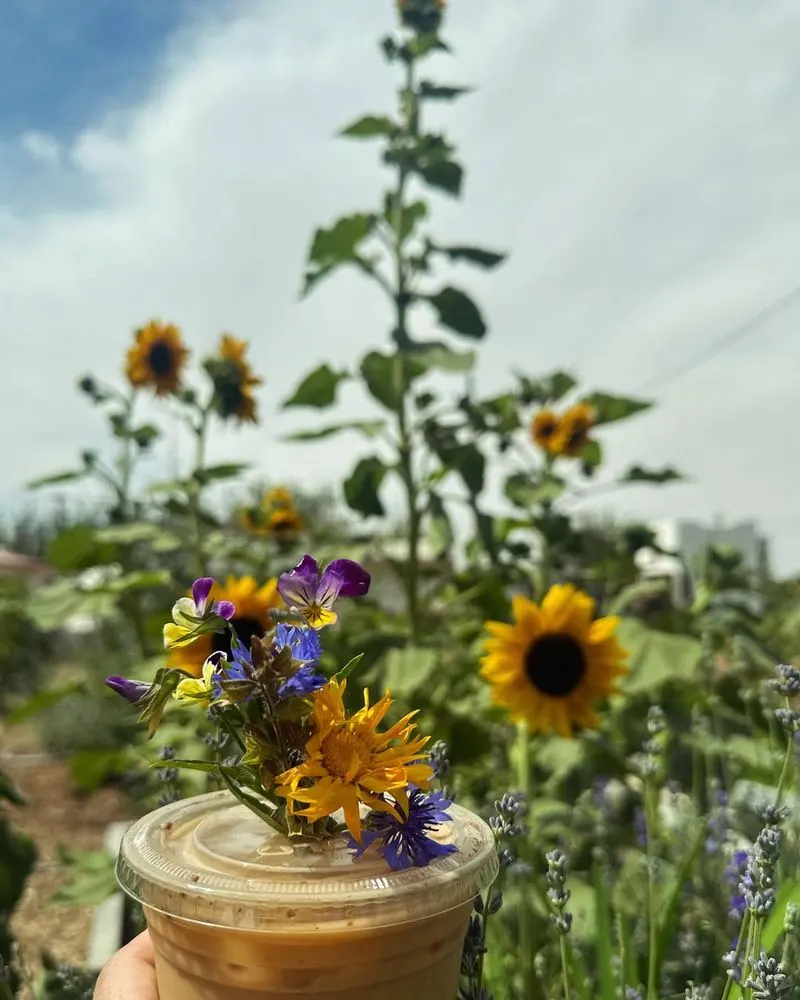
Sunflowers are more than just a symbol of summer; their petals are edible and can bring a mild, nutty flavor to dishes. Typically used in salads, these vibrant petals can add a splash of color and texture. Beyond their culinary uses, sunflower petals are known for their antioxidant properties. Sunflowers are remarkably easy to grow, making them accessible for gardeners of all skill levels. Utilizing sunflower petals in your kitchen can provide a unique twist to familiar recipes. A classic favorite, sunflowers are as versatile as they are cheerful.
Bee Balm
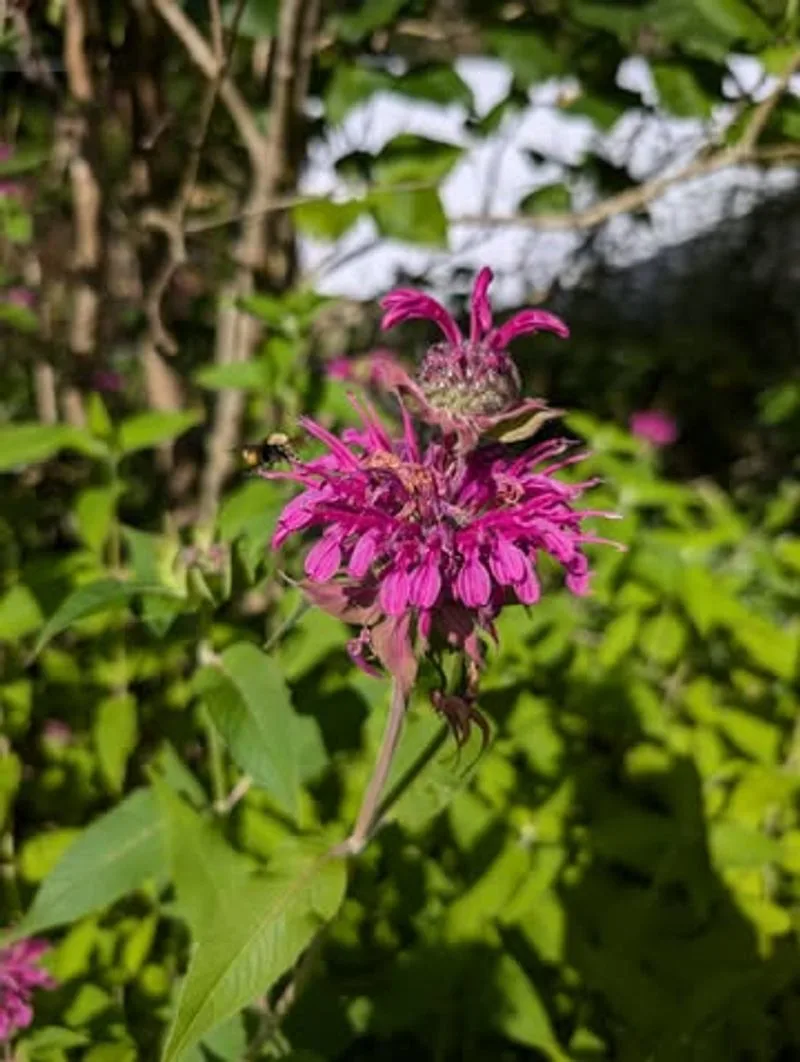
Bee balm, with its unique, spicy taste reminiscent of oregano, is a versatile flower in the kitchen. These vibrant blooms are perfect for teas, salads, and garnishing meat dishes. Known for attracting pollinators, bee balm is a valuable plant for any garden. Its strong flavor means a little goes a long way, adding depth to culinary creations. Beyond the plate, bee balm has traditional uses in herbal medicine, particularly for digestive health. Adding bee balm to your repertoire can enhance both garden and kitchen.
Begonia
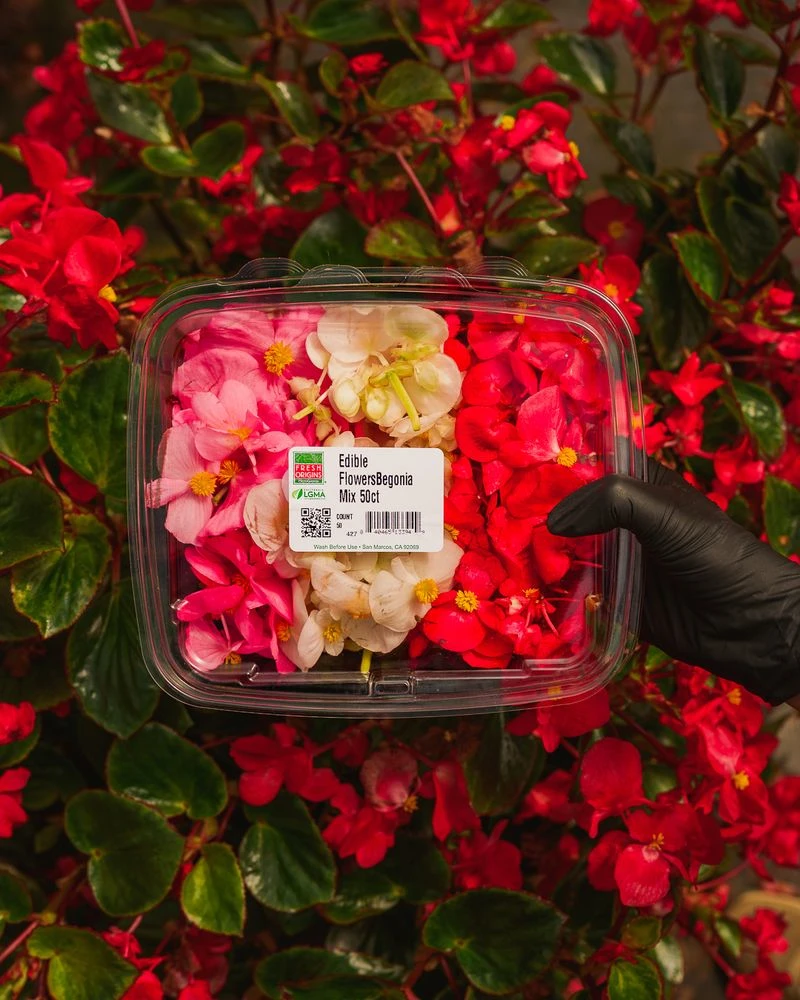
Begonias are not just a gardener’s delight; their tangy flavor can bring a zesty twist to dishes. The crisp texture and citrusy taste make begonias a refreshing addition to salads and desserts. These flowers can be used to create colorful garnishes that are both eye-catching and tasty. Beyond their use in the kitchen, begonias are easy to grow and offer a continuous display of color throughout the season. Incorporating begonias into your culinary creations can provide both visual appeal and a burst of flavor.

